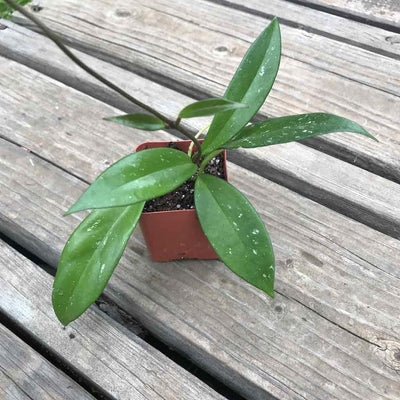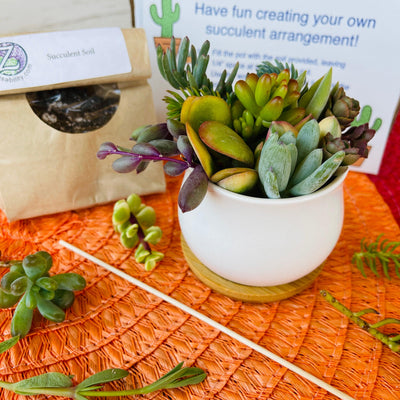How to Keep your Succulent Plants Colorful Year-Round
Did you know that most succulent plants change their colors throughout the year based on climate, season and environment?

Succulent plants are easy-care plants that hold a lot of water in their stems and leaves. This makes them incredibly drought-tolerant and low-maintenance. On top of that, they come in a wide range of shapes and colors.
There are some rosette succulents whose leaves can change from completely blue to completely pink. We like to say they 'blush'.
So what makes succulents change their colors?
Sun, moisture and temperature are the top three factors that bring out color in succulents. You will most often hear succulents referred to as 'sun-stressed' when they are showing deep coloration.
Aloe plants are a good example of the type of succulent plants that can go through drastic coloration changes. Some Aloes change from green in Spring - when new growth is popping up - to deep red in Summer, when they are under the full-sun and receive very little water.
This is an Aloe 'Cynthia Giddy' that has been receiving full Southern California sun and has changed from it's natural, newborn green coloration to this deep orange-red coloration. It has been receiving adequate rain and water, so this 'stress' is sun-stress.

What does it mean if your succulent is staying green?
The good news if your succulent plant is staying green, is that green means your plant is healthy and happy. As long as your succulent isn't stretching out too much - an indicator it needs more light - then your plant is most likely thriving and doing its thing. New growth is almost always green or green/blue. So you will see a lot of this color in the Spring and Fall, when most succulents are in their growth cycles.
Green coloration also means that your plant is not stressed. You will hear colorful succulents referred to as 'stressed' and this usually means it is receiving extra sun and / or less water than usual.
How can you get colorful succulents to stay colorful?
There are a few types of succulents that are naturally colorful and will keep their color

year round. Some examples of these are Graptoveria 'Debbie', Pepperomia 'Ruby Glow', and Kalanchoe 'Flapjacks'.
However, even these succulents will get deeper coloration when exposed to temperature fluctuations or increased sun exposure. The Golden Sedum pictured here is an example of a succulent that stays gold year-round but picks up red coloration when stressed.
Here are our top three tips for keeping your succulents colorful:
- Provide adequate light, at least 'partial sun' conditions, which is 2-3 hours of direct sunlight. Adjust for grow lights if necessary.
- Only water when the soil is very dry to the touch or the leaves on your succulents start to look deflated or slightly wrinkled like raisins.
- If possible, grow outdoors where your plants will experience day-to-night temperature fluctuations. Many outdoor succulents will be most colorful in Fall and Winter when the nights are cold and the temperature fluctuations are more extreme.










Leave a comment